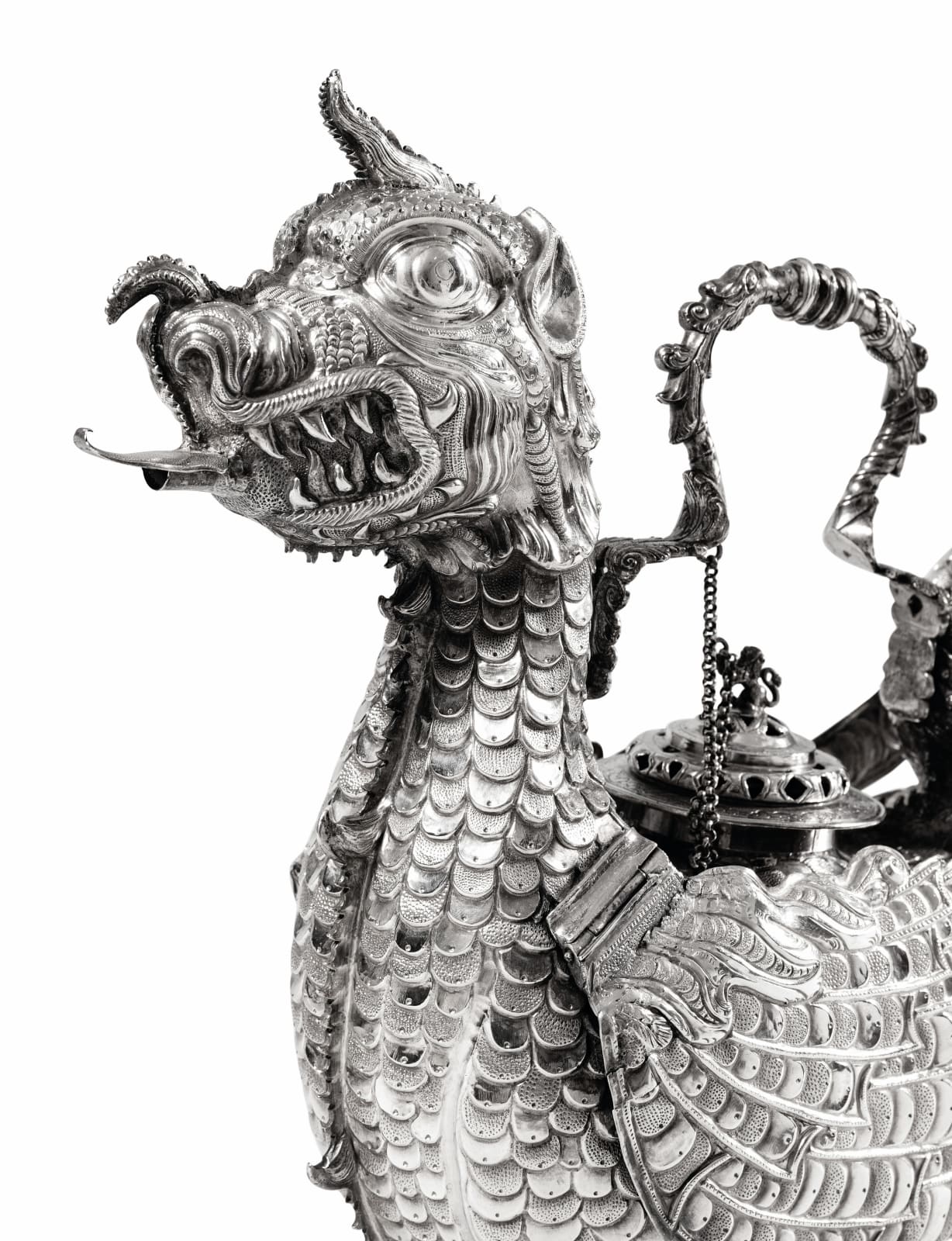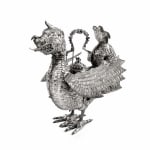The Fantastic Chinese Stove-kettle of the Three Worlds, China, Ming Dynasty, late 16th century, early 17th century
Cast, beaten, repoussé, chased, engraved and burnished silver
Height 47 cm; weight 5,050 g
Long-Fenghuang Stove-Kettle 龙凤火壶
Formerly known as “Caquesseitão”
Formerly known as “Caquesseitão”
Further images
Provenance
Collection of the 2nd Conde de Bertiandos (1818-1874), Palácio dos Biscaínho, Braga; Marqueses de Alegrete; Sotheby’s, Paris, June 26, 2013, lot 242; His Highness Sheikh Hamad bin Abdullah Al Thani; Sotheby’s, Paris, Hôtel Lambert, Une Collection Princière, Volume II: Kunstkammer, October 12, 2022, lot 310
Exhibitions
Les trésors de l'orfèvrerie du Portugal, Paris, Musée des Arts Décoratifs, November 1954 – January 1955, no. 99; Exposiçao de Ourivesaria Portuguesa e Francesca, The Ricardo do Espirito Santo Silver Foundation, Lisbon, April-May 1955, no. 112; XVII Exposiçao de Arte Cultura e Ciência do Conselho da Europa, Casa dos Bicos, Lisbon, 1983, no. 9.
Literature
Reynaldo dos Santos and Irene Quilhó et al.: Les Trésors du L’Orfèvrerie du Portugal, Musée des Arts Decoratifs, Paris, November 1954 – January 1955, 43, cat. no. 99, pl. 47; Reynaldo dos Santos et al. (eds). Exposiçaode Ourivesaria Portuguesa e Francesca, The Ricardo do Espirito Santo Silver Foundation, Lisbon, April-May 1955, 43, cat. no. 112, pl. 55; Reynaldo dos Santos and Irene Quilhó: Ourivesaria Portuguesa nas Coleccòes Particulares, Lisbon, 1974. Author’s edition, 34: “Caquesseitão”.
The "Long-Fenghuang Stove-Kettle" from the Ming Dynasty, dating to the late 16th to early 17th century, is a remarkable artifact of Chinese craftsmanship. This piece features the symbolic dragon (Long) and phoenix (Fenghuang), emblematic of imperial authority and harmony, reflecting the deep cultural and mythological roots in Chinese civilization. The artifact's detailed morphology, including elements like the dragon's head and scales, exemplifies the artisans' mastery. It has a rich provenance, having been part of notable collections and exhibited in prestigious venues such as the Musée des Arts Décoratifs in Paris. The stove-kettle's analysis highlights the contrast between Chinese and Western mythological interpretations, underscoring the artifact's significance in both art and cultural heritage.





